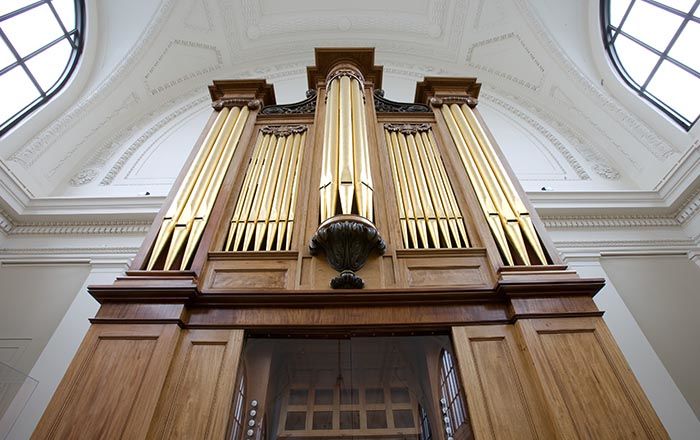Clarinet in B-flat
George Goulding Co. British
Not on view
The Goulding firm was established by George Goulding as "Goulding & Co." around 1800 in London. Between 1804 and 1808 the workshop was at the address "No. 117 New Bond Street". Later Goulding instruments were stamped with the coat of arms of the prince and princess of Wales, because the firm was appointed as "music-sellers to the Prince and Princess of Wales. (Waterhouse, NLI, 142; Fricke, Catalogue of the Sir Nicholas Shackleton Collection, 102-103).
Overall size: 669
Bore: c-hole 13.6; f-hole 13.8
Conical part: 148.
Technical description: Boxwood with ivory ferrules and brass keywork. Six pieces: mouthpiece, barrel, upper section, middle section for the fingers of the right hand, lower section with keys, bell. Ebonite mouthpiece is a copy of a historic, English-style long tenon mouthpiece. English-style flask shaped barrel. Speaker liner projects ca. 4mm into the bore. Levers for L4, tone-hole and key for R4 mounted in a bell-shaped swelling. Zig-zag F♯3/C♯5 lever guided in a rudiment of a square ring. Bevelled G♯3/E♭5 touchpiece.
L0: T; speaker.
L1: T; throat A♮.
L2: T.
L3: T.
L4: E3/B♮4; F♯3/C♯5.
R1: T.
R2: T.
R3: T.
R4: T; G♯3/E♭5.
Keyhead type: flat square.
Keymount type: blocks and swelling.
Inscribed on all pieces except for non-original mouthpiece "GOULDING & Co." On bell also "NEW BOND ST. / LONDON"
Mouthpiece inscribed "B.ACKERMAN" in a scroll. This is a modern copy made by Brian Ackerman/UK. (Heike Fricke, 2014)
This image cannot be enlarged, viewed at full screen, or downloaded.
This artwork is meant to be viewed from right to left. Scroll left to view more.
.jpg)

.jpg)
.jpg)
